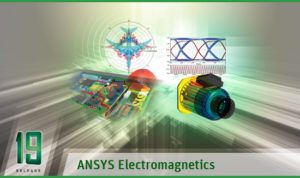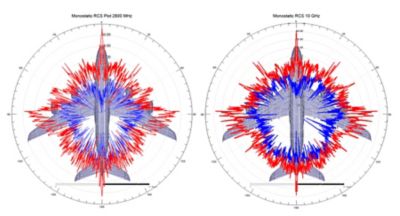-
United States -
United Kingdom -
India -
France -
Deutschland -
Italia -
日本 -
대한민국 -
中国 -
台灣
-
-
產品系列
查看所有產品Ansys致力於為當今的學生打下成功的基礎,通過向學生提供免費的模擬工程軟體。
-
Ansys Blog
February 1, 2018
Ansys HFSS 19 – New Capability, New Look, More Power
Exciting new capabilities have just been released in Ansys HFSS 19. With this release, we are delivering new features such as Radar Cross Section Analysis (RCS), a dynamic new user interface, more computational power and new packaging that will deliver an incredible amount of value to our current and future users.
In this blog, I provide a brief introduction to the new HFSS but please consider listening to my colleague Matt Commens, HFSS Lead Product Manager, in the HFSS Product Update Webinar to find out even more details.
Ansys 19 delivers Radar Cross Section (RCS) calculations into the Ansys Electronics Desktop integrated HFSS SBR+ solver. This capability is based on Ansys’ industry- leading shooting-and-bouncing ray plus (SBR+) method to predict far-field radar signatures for 3D target models. The powerful and accurate asymptotic methods of HFSS SBR+ allow our users to solve computationally large simulations very quickly and is a great asset for engineers designing military and aerospace applications, such as advanced target recognition systems and stealth technology.
ANSYS HFSS 19 dvanced target recognition systems and stealth technology
In addition, the continued integration of the SBR+ technology into the Electronics Desktop enables comprehensive and accurate large-scale, near-field radar analysis for performing automotive radar simulation for ADAS and autonomous vehicle applications.
Another significant advancement in Ansys HFSS is a new, intuitive ribbon-based interface. This new interface has a modern look and feel and streamlines the simulation process. With the new interface, users with little or no simulation experience can set up and solve high-frequency electromagnetic field simulations with ease.
Along with the new user interface, we’ve added significant solver and HPC capability to the Ansys HFSS product for greater value-add for our users. HFSS now includes our finite element transient or time-domain-based, high-frequency EM solver to go along with the existing frequency domain-based solvers for finite elements and Method of Moments (MoM). In one package, HFSS delivers both frequency and time-domain finite element solvers along with 2.5D and 3D MoM technology.
And, to deliver even more computational power to our users, HFSS now includes as standard four computational cores that will add to existing HPC products and provide further simulation acceleration.
Finally, the technology available with the electronics HPC products can now be enabled with the broader Ansys HPC products. With all these Ansys 19 enhancements, HFSS delivers the most comprehensive set of solvers and HPC technologies in a single package on the market. Users can now perform more comprehensive design exploration through simulation using the accurate and reliable gold standard technology of HFSS.












